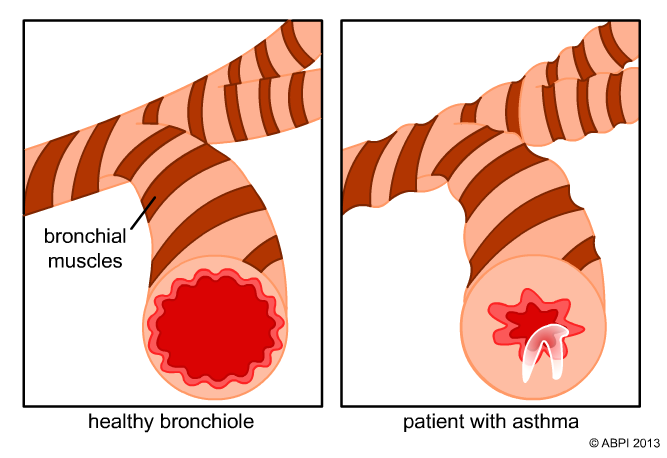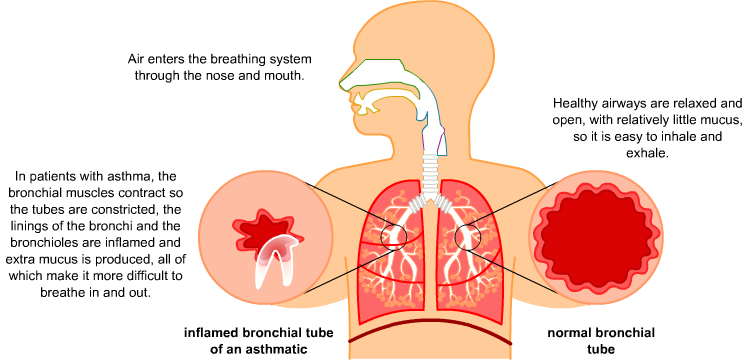This topic takes on average 120 minutes to read.
 Biology
Biology
 Science
Science
What is asthma?
The lungs have adapted over time to ensure that gaseous exchange is efficient. You can find out more about gaseous exchange and the adaptations of the lungs in the gaseous exchange resource.
Diseases of the lung interfere with gaseous exchange as they have an impact on the lung structures. For example, asthma is a lung condition which makes the bronchioles inflamed and constricted.
Asthma causes the airways of the lungs to narrow so people have difficulty breathing. People with asthma have over-sensitive airways that become irritated by triggers such as pollen, house dust mites, pet hairs, exercise, smoke or even cold air. Asthma can also be triggered by stress. Someone who has asthma isn’t affected all the time. They may have attacks several times a day or only a few times a year.

During an asthma attack, the cells lining the bronchioles release chemicals called histamines. Histamines cause the lining of the cells to become inflamed, produce large amounts of mucus and swell. Histamines also make the muscles in the walls of the bronchioles contract. The surface area to volume ratio therefore decreases, and we need a large surface area to volume ratio for effective ventilation. As a result of all these changes the airways narrow, making it very difficult to move air into and out of the lungs.
This can lead to a tight chest and shortness of breath since gaseous exchange is reduced.
